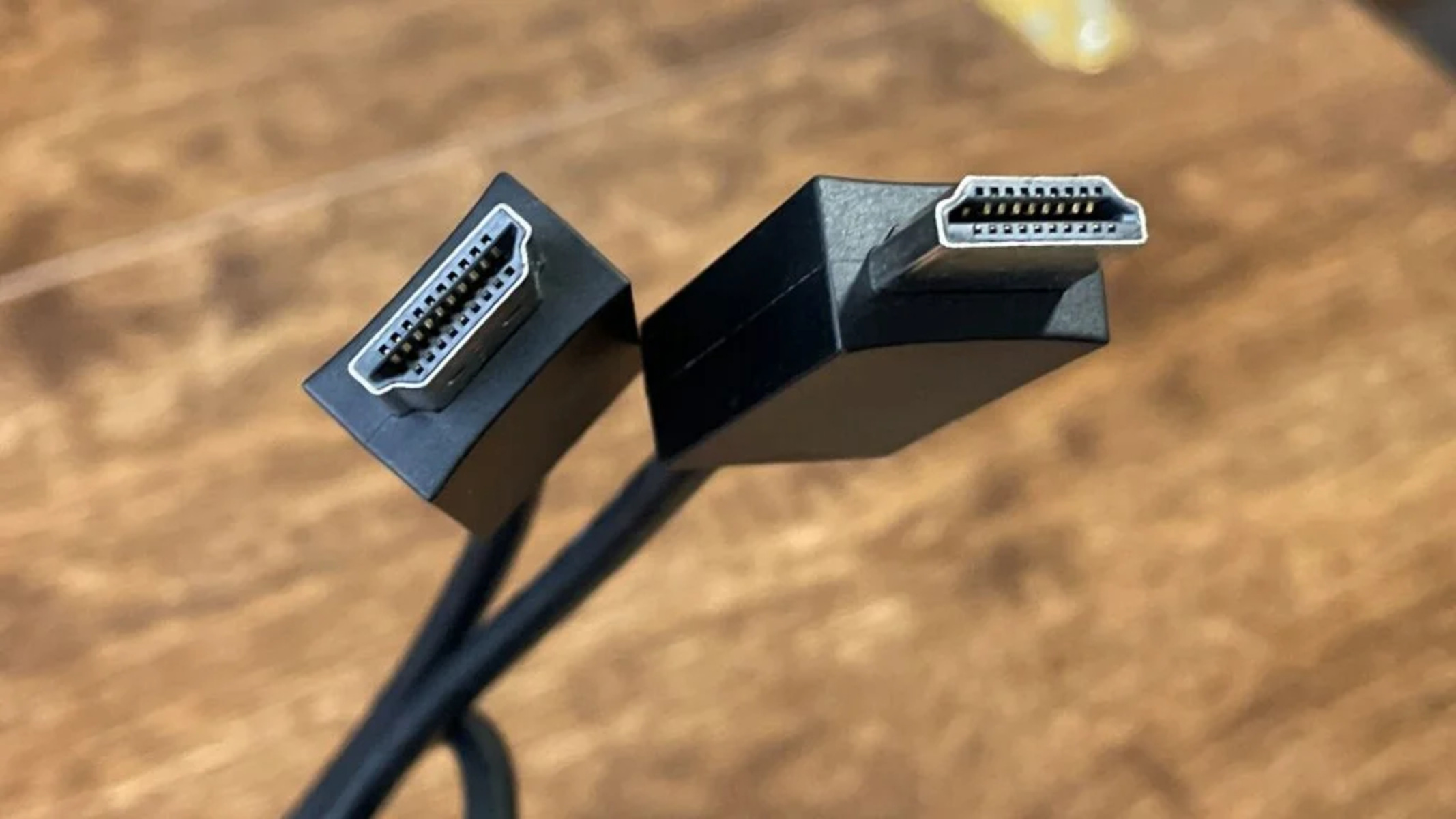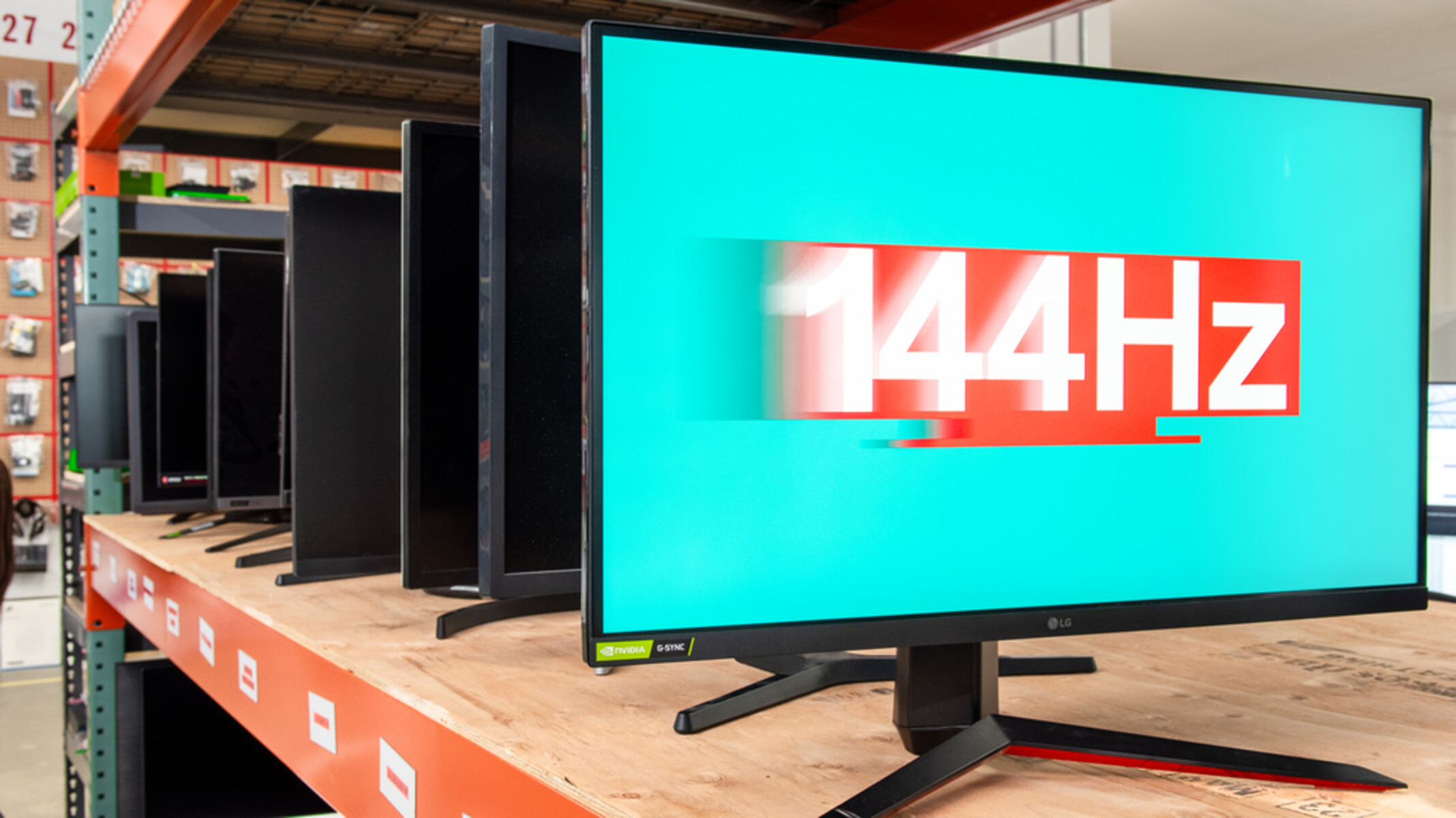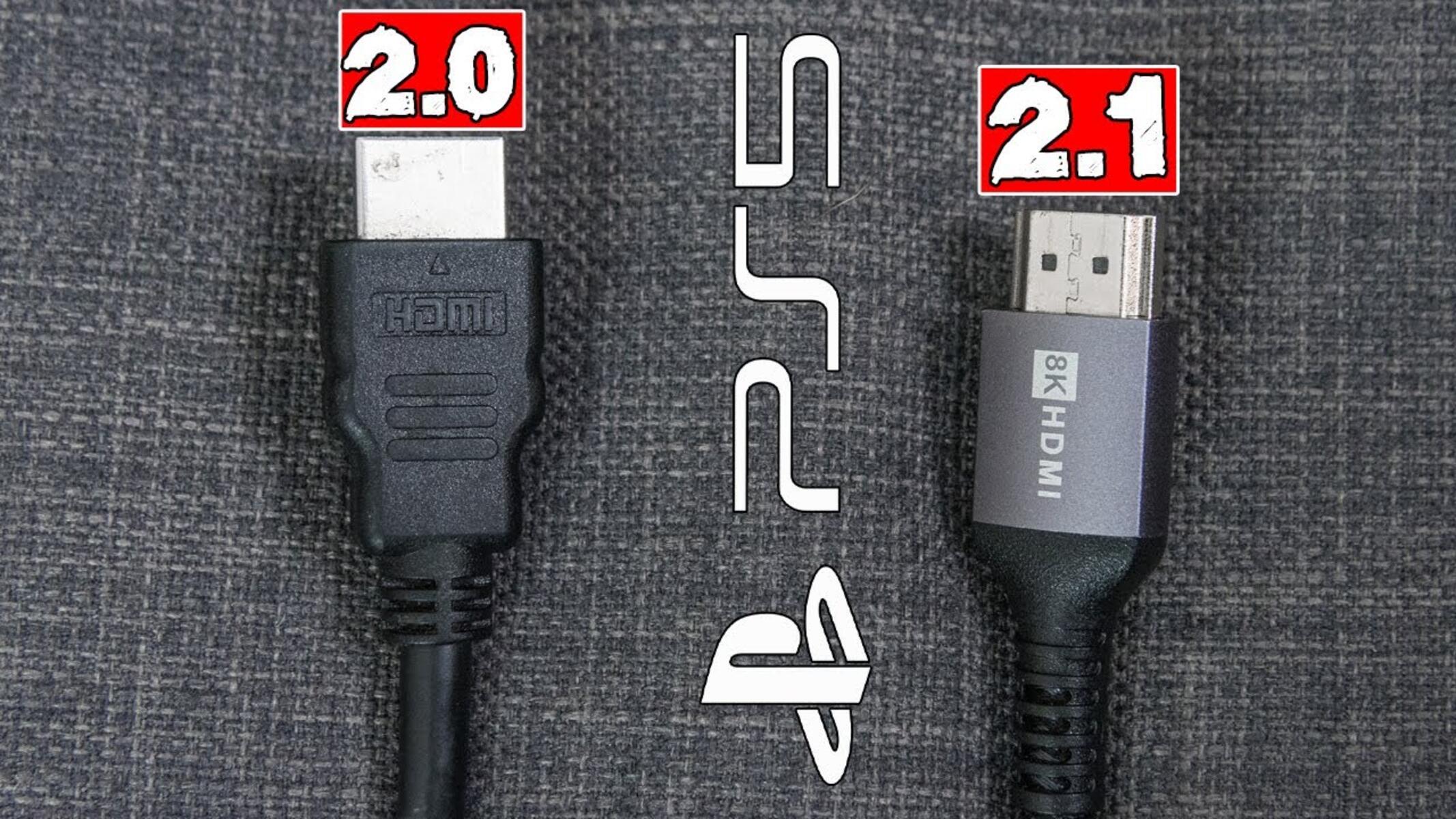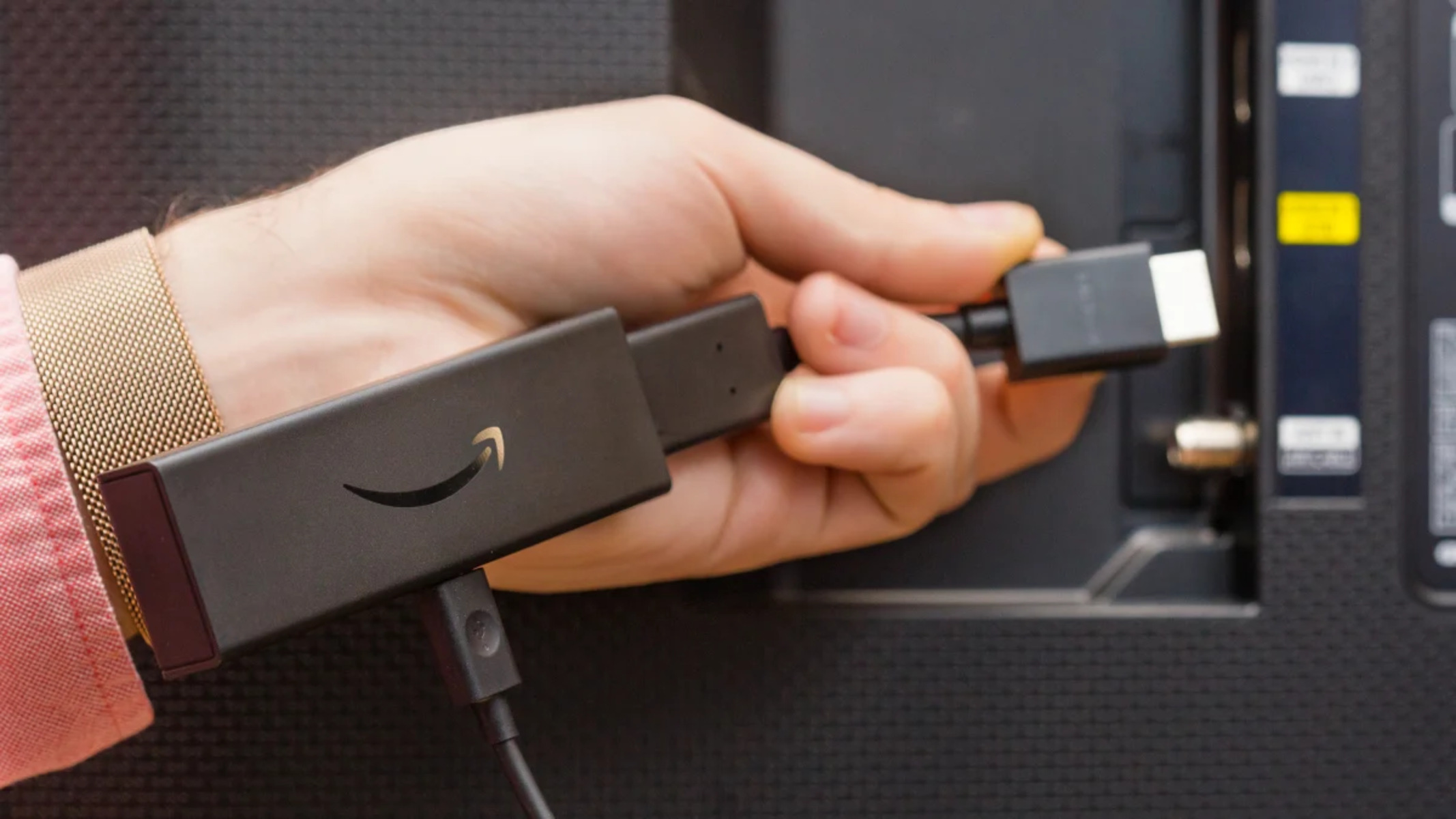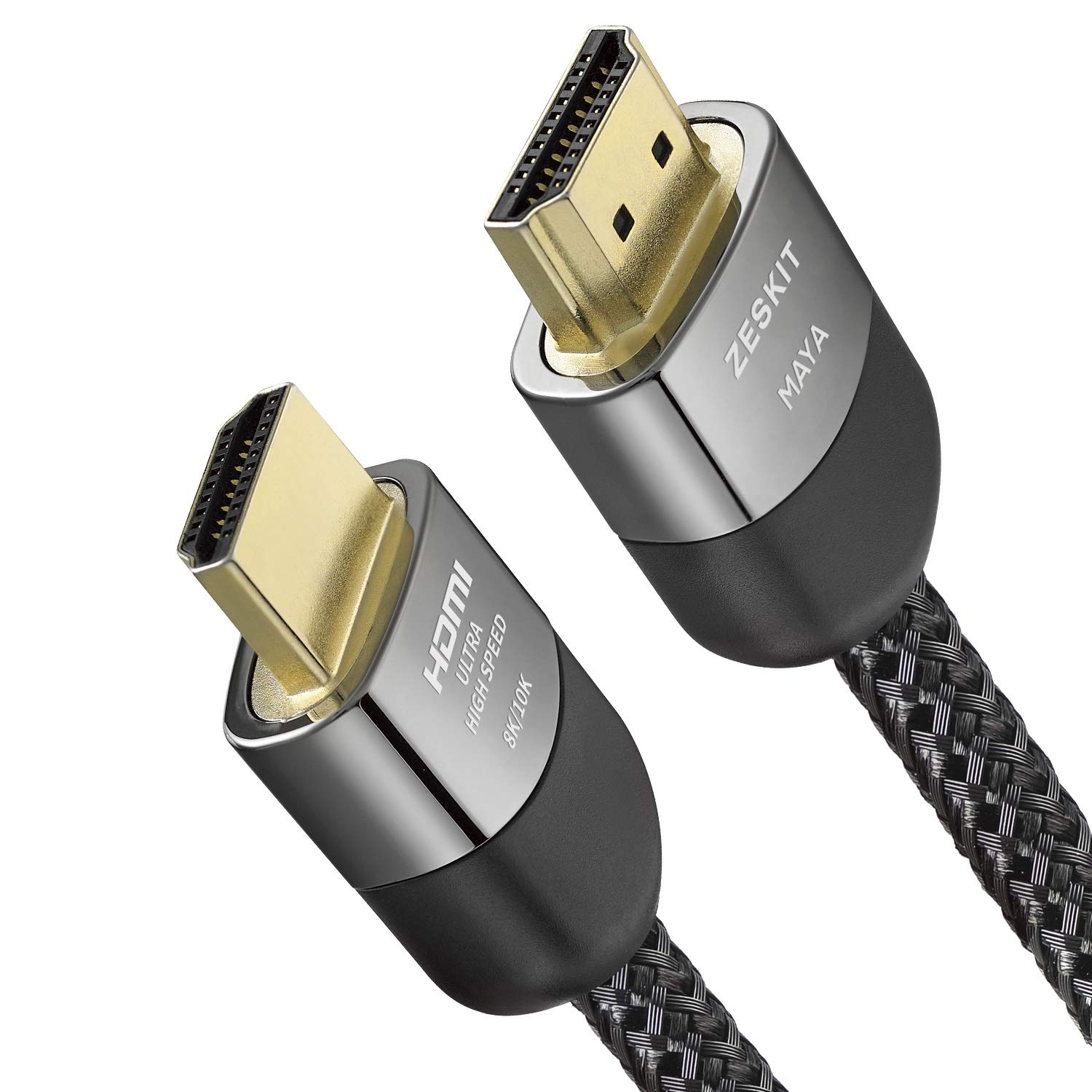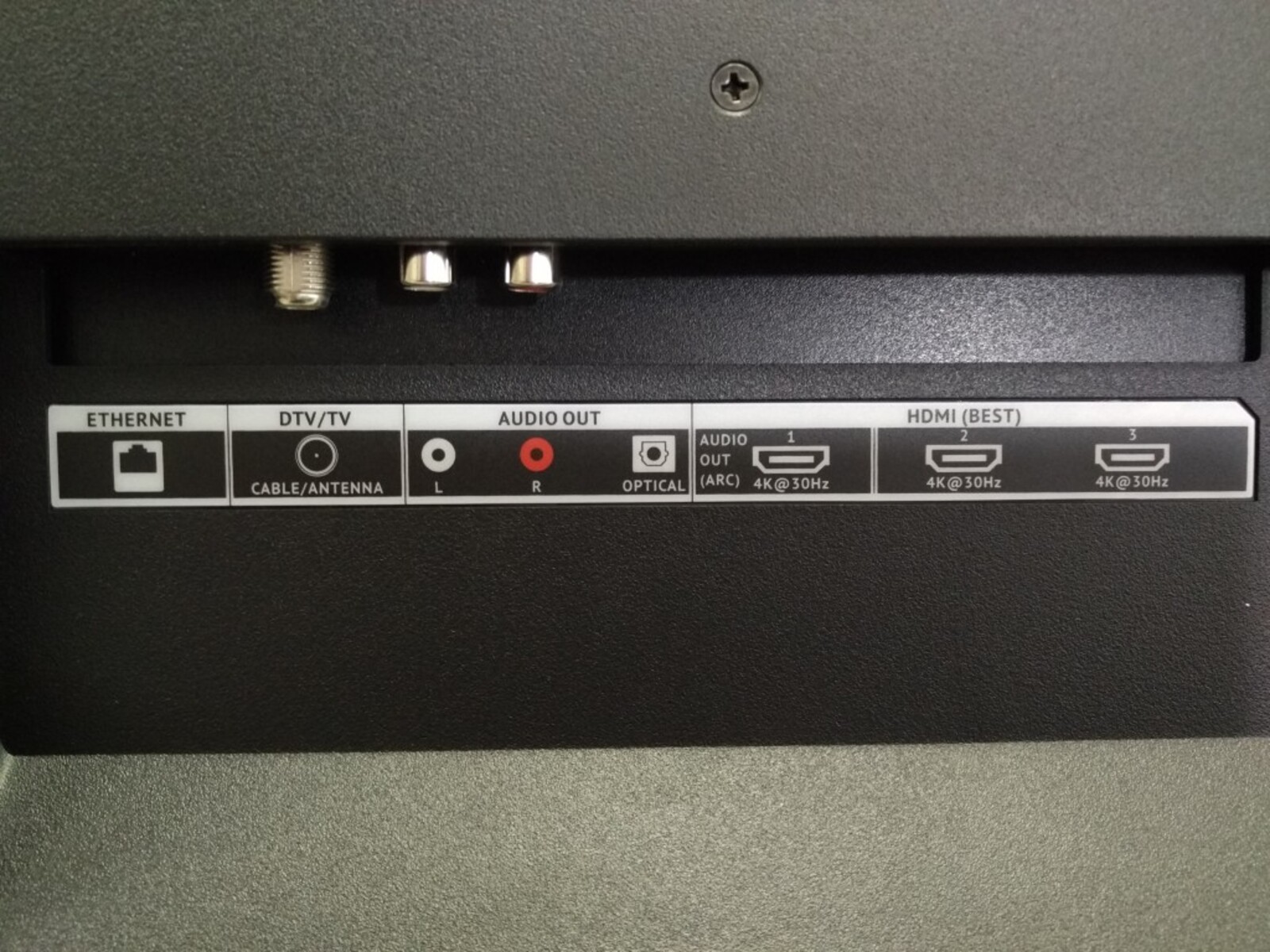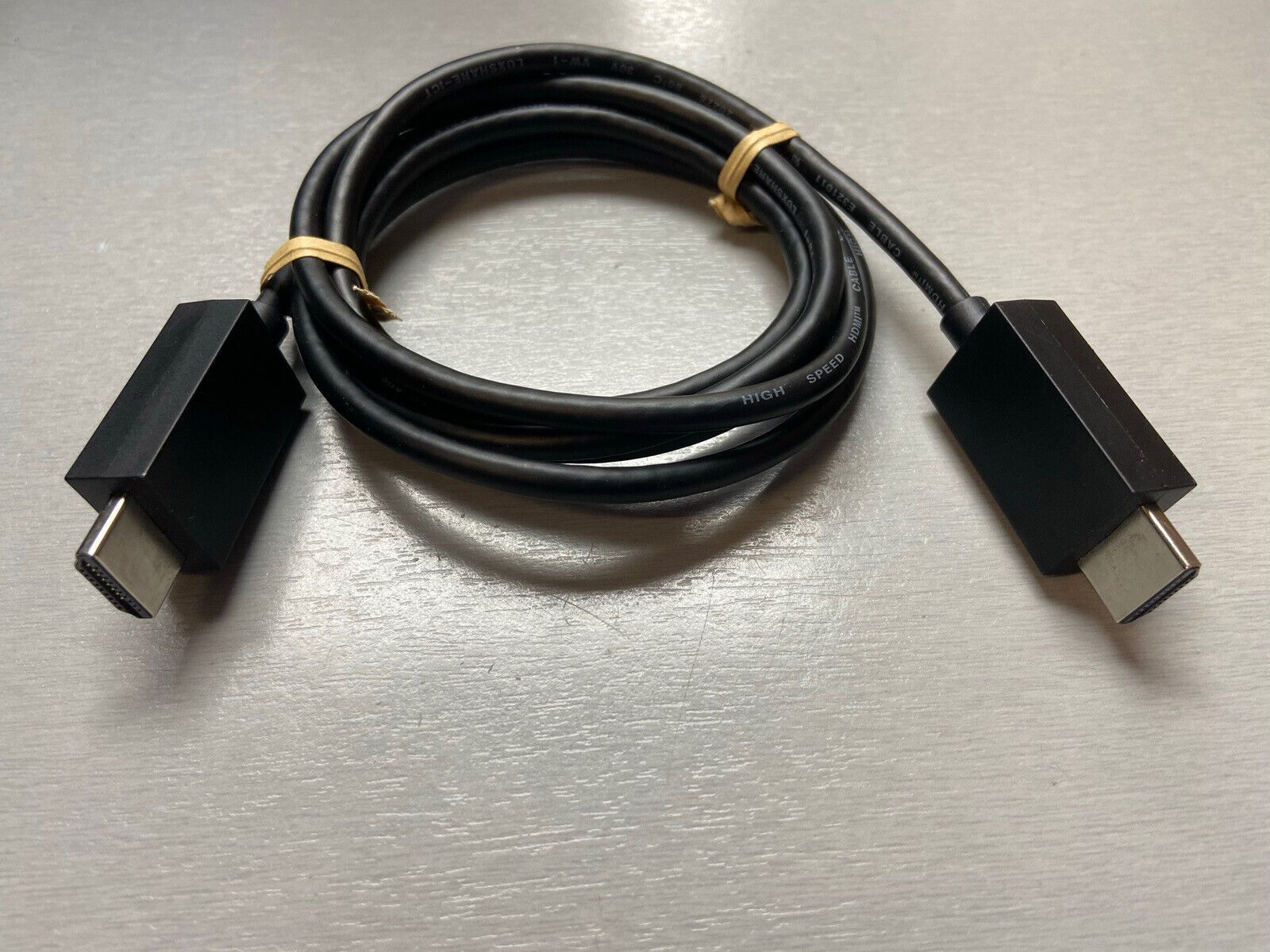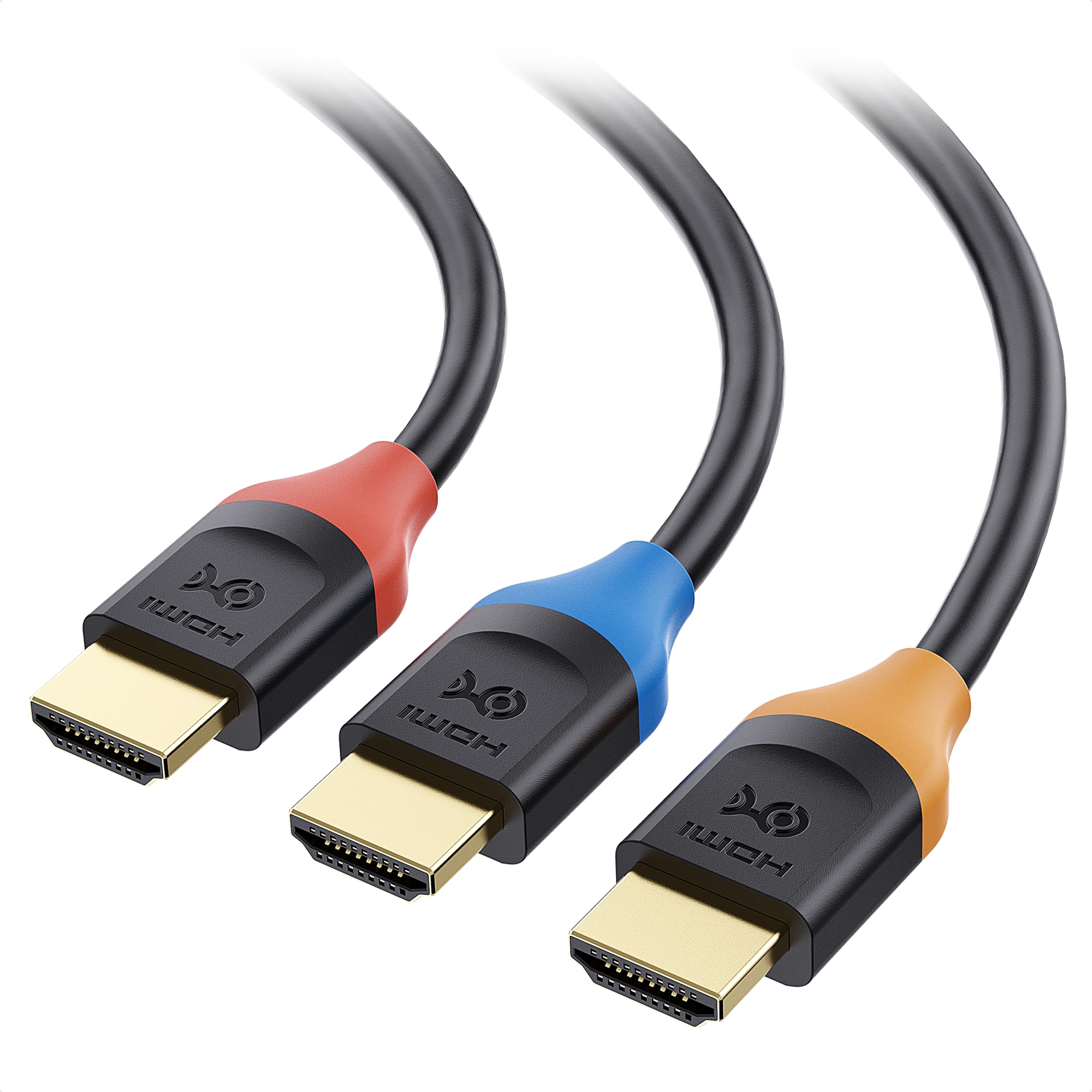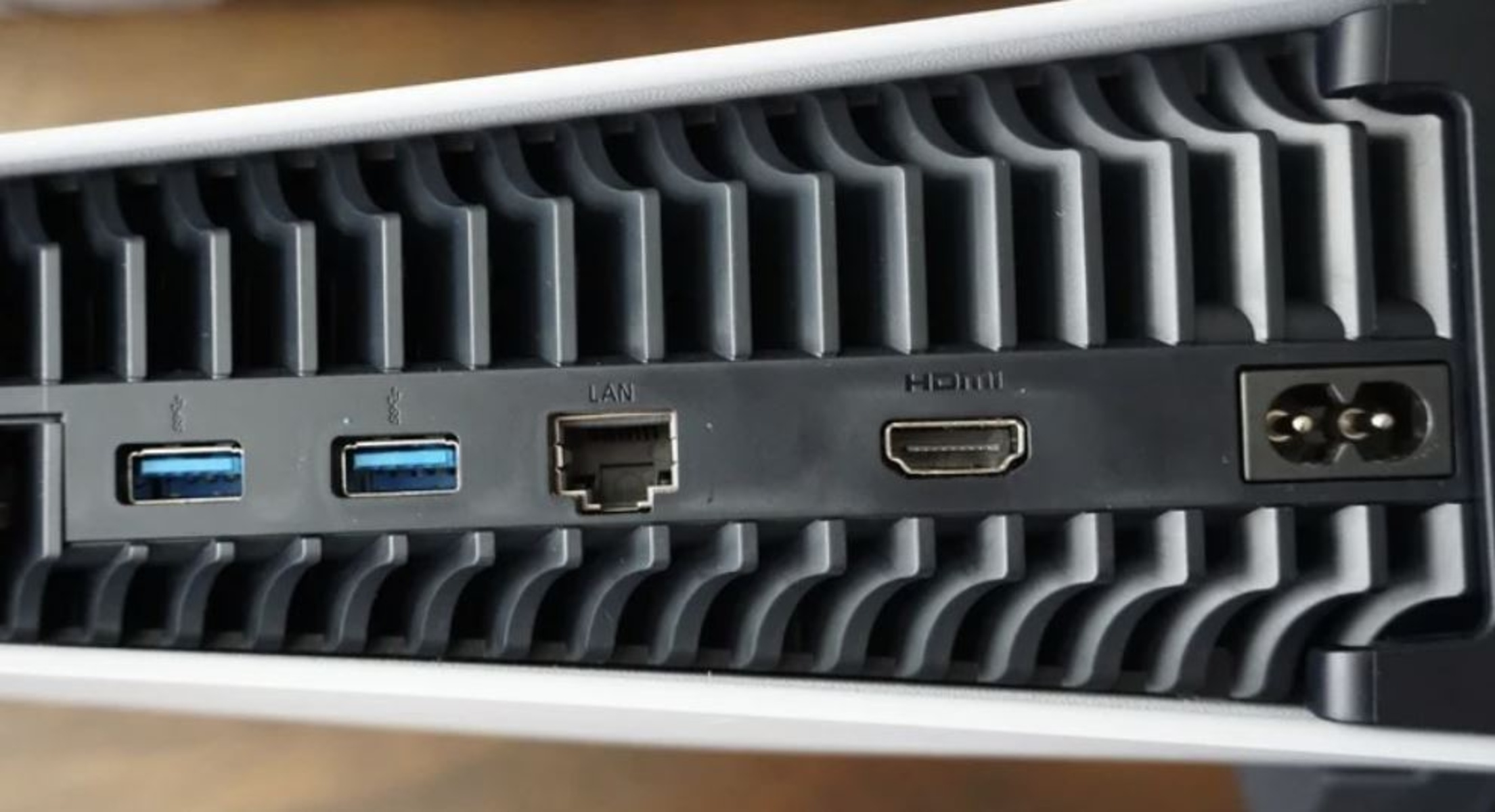Introduction
Welcome to the world of HDMI, the standard for connecting audio and video devices. HDMI technology has evolved over the years, with the latest version being HDMI 2.1. If you’re wondering how to determine if your HDMI is 2.1, you’ve come to the right place. In this article, we’ll guide you through the process of identifying the HDMI version on your devices.
HDMI 2.1 is the latest iteration of the HDMI specification and boasts a range of new features and capabilities. It offers higher bandwidth, enabling support for higher resolutions, faster refresh rates, and greater color depths. This makes it the ideal choice for those who want to experience the best possible audio and video quality on their compatible devices.
Whether you’re a gamer looking to take advantage of the latest gaming consoles and enjoy smooth gameplay, or a movie enthusiast seeking breathtaking visuals and immersive sound, HDMI 2.1 offers a significant upgrade over its predecessors.
Figuring out if your HDMI is 2.1 can be a bit tricky, as it depends on various factors such as the device itself, the cable you’re using, and the settings within the device. In the following sections, we’ll explore different methods that you can use to determine the HDMI version on your devices.
What is HDMI 2.1
HDMI 2.1 is the latest update to the HDMI (High-Definition Multimedia Interface) specification, which is the industry standard for transmitting audio and video signals between devices. It offers a significant improvement over previous versions and brings a host of new features and capabilities.
One of the key advancements in HDMI 2.1 is the increased bandwidth capacity. It supports a bandwidth of up to 48 Gbps, which is nearly twice as much as HDMI 2.0. This increased bandwidth allows for higher resolutions, faster refresh rates, and greater color depths. With HDMI 2.1, you can enjoy stunning 4K, 8K, and even higher resolution content, along with smoother, more fluid motion.
Another notable feature of HDMI 2.1 is Variable Refresh Rate (VRR), which is particularly beneficial for gamers. VRR synchronizes the display’s refresh rate with the output of the graphics card, eliminating screen tearing and providing a smoother gaming experience. This feature ensures that the screen refreshes at the optimum rate, reducing lag and improving overall gameplay.
HDMI 2.1 also introduces Quick Frame Transport (QFT) and Auto Low Latency Mode (ALLM). QFT reduces latency by minimizing the time it takes for the display to receive frames from the source, resulting in faster response times. ALLM, on the other hand, automatically switches the display to its lowest latency mode when connected to a compatible gaming console or device, ensuring minimal input lag.
Enhanced Audio Return Channel (eARC) is another significant addition in HDMI 2.1. It supports the transmission of advanced audio formats, including Dolby Atmos and DTS:X, from compatible TVs to audio devices, providing a more immersive and realistic sound experience.
In addition to these features, HDMI 2.1 also supports Dynamic HDR (High Dynamic Range), which optimizes the picture quality on a frame-by-frame basis, ensuring accurate and vibrant colors. It also includes Enhanced Gaming Features such as Variable Refresh Rate (VRR) and Auto Low Latency Mode (ALLM), making it an attractive choice for gamers.
Now that you have a better understanding of what HDMI 2.1 offers, let’s explore how you can determine if your HDMI is 2.1 on your devices.
Benefits of HDMI 2.1
HDMI 2.1 comes with several benefits that make it a worthwhile upgrade for audio and video enthusiasts. Let’s delve into some of the key advantages of HDMI 2.1:
1. Enhanced Video Resolution: HDMI 2.1 supports higher resolutions, including 4K, 8K, and even higher, allowing you to enjoy crystal-clear visuals with exceptional detail and sharpness. This makes it perfect for watching high-resolution content on modern TVs and projectors.
2. Higher Refresh Rates: With HDMI 2.1, you can experience smoother and more fluid motion, thanks to its support for higher refresh rates. This is especially beneficial for gamers, as it reduces motion blur and provides a more responsive and immersive gaming experience.
3. Increased Bandwidth: HDMI 2.1 offers significantly higher bandwidth, enabling the transmission of large amounts of data. This is essential for handling the demanding requirements of high-resolution content, HDR, and advanced audio formats without any loss in quality.
4. Variable Refresh Rate (VRR): VRR is a key feature of HDMI 2.1 that synchronizes the display’s refresh rate with the output of the graphics card. This eliminates screen tearing and stuttering, resulting in smoother gameplay and a more enjoyable viewing experience.
5. Enhanced Audio Support: HDMI 2.1 brings improved audio capabilities, including support for advanced audio formats such as Dolby Atmos and DTS:X. This provides a more immersive and realistic audio experience, making movies and games come to life with rich and dynamic sound.
6. Quick Frame Transport (QFT): QFT is a feature that reduces latency and ensures faster frame delivery from the source to the display. Gamers will appreciate the reduced input lag, ensuring more responsive and seamless gameplay.
7. Auto Low Latency Mode (ALLM): ALLM automatically detects when a compatible gaming console or device is connected and switches the display to its lowest latency mode. This eliminates the need for manual configuration and ensures minimal input lag, optimizing the gaming experience.
8. Dynamic HDR: HDMI 2.1 supports Dynamic HDR, which optimizes the HDR metadata on a frame-by-frame basis. This results in improved color accuracy, contrast, and brightness, delivering a visually stunning picture with lifelike detail.
Overall, HDMI 2.1 offers an array of benefits that enhance both video and audio experiences. Whether you’re a gamer, a home theater enthusiast, or simply looking to future-proof your audio and video devices, HDMI 2.1 provides the latest and greatest features for an immersive and high-quality entertainment experience.
Checking HDMI version on the device
If you’re wondering how to check the HDMI version on your device, there are several methods you can try. Here are a few approaches to determine the HDMI version on your device:
1. Check the device manual: The easiest and most reliable way to find out the HDMI version on your device is to refer to the user manual. The manual usually contains detailed specifications that will mention the HDMI version supported.
2. Look for HDMI ports: Physically inspect the HDMI ports on your device. HDMI 2.1 ports are backward compatible, meaning they can support previous HDMI versions as well. However, if your device has HDMI 2.1 ports, it’s a good indication that it supports the latest version.
3. Check the packaging: If you still have the original packaging of your device, check for any HDMI version labels or logos on the box. Manufacturers often mention the supported HDMI version on the packaging to inform customers about the capabilities of the device.
4. Explore the device settings/menu: Navigate through the settings or menu options on your device. Look for any information regarding HDMI or video settings. Some devices may display the HDMI version in the settings menu, providing an easy way to check the version.
5. HDMI version label on the device: Check the physical body of your device for any labels or markings that indicate the HDMI version. Manufacturers sometimes mention the HDMI version near the HDMI port or on the device itself.
6. Use the manufacturer’s website: Visit the manufacturer’s website and search for your specific device model. The product page or specifications section should provide detailed information about the supported HDMI version.
Remember that not all devices may prominently display the HDMI version, especially older models. In such cases, referring to the user manual or manufacturer’s website is often the best way to find accurate information about the HDMI version.
By using these methods, you can confidently determine the HDMI version supported by your device. Next, let’s explore how to check the HDMI version through properties and settings.
Checking HDMI version through properties and settings
If you want to check the HDMI version on your device without referring to the user manual or physical inspection, you can try accessing the properties and settings of your device. Here’s how:
1. Windows:
- Right-click on the desktop and select “Display Settings” from the context menu.
- In the Display Settings window, scroll down and click on “Advanced display settings.”
- Under the Advanced display settings, click on “Display adapter properties.”
- In the Adapter tab of the properties window, look for the “Adapter Information” section.
- Here, you should find information about the adapter name, chipset, and importantly, the “HDMI version” supported.
2. Mac:
- Click on the Apple menu and select “About This Mac.”
- In the Overview tab, click on “System Report.”
- In the left sidebar, under “Hardware,” click on “Graphics/Displays.”
- On the right panel, look for your display information and locate the “Display Connector” or “Connector Type” field.
- Here, you should find information about the display connector, including the HDMI version supported.
3. Smart TVs:
- Navigate to the TV settings menu using your remote control.
- Look for an option related to picture or display settings.
- Within the display settings, there might be information about the HDMI version supported by the TV.
- Alternatively, you can refer to the TV’s user manual or the manufacturer’s website for detailed specifications.
Keep in mind that the steps provided above are general guidelines and may vary depending on the device or operating system you’re using. If you encounter any difficulties, consulting the device’s manual or the manufacturer’s website is recommended for accurate information about the HDMI version.
Now that you’ve explored different methods to check the HDMI version through properties and settings, let’s move on to the next section where we’ll discuss how to check the HDMI cable for version compatibility.
Checking HDMI cable for version compatibility
When it comes to HDMI, the cable you use plays a crucial role in determining the version compatibility. Here are a few methods you can use to check if your HDMI cable is compatible with the desired HDMI version:
1. Read the cable packaging: Check the packaging or the product description of your HDMI cable. Manufacturers often mention the HDMI version compatibility on the packaging or provide details online. Look for labels or descriptions that indicate the cable supports HDMI 2.1 or the specific version you are looking for.
2. Check the cable connectors: Examine the HDMI cable connectors. HDMI 2.1 cables typically have larger, more robust connectors compared to earlier versions. The HDMI 2.1 connectors have 19 pins, while HDMI 2.0 and earlier versions have 18 pins. If your cable has 19 pins, it is likely compatible with HDMI 2.1.
3. Check the cable’s specified bandwidth: HDMI 2.1 cables are designed to support higher bandwidths. Look for cables that mention high-bandwidth support, such as “48 Gbps” or “support for 8K resolution.” These specifications indicate that the cable is compatible with HDMI 2.1.
4. Refer to the manufacturer’s website: If the cable packaging doesn’t provide clear information, visit the manufacturer’s website for more details. Look for the cable model or search for HDMI cables that are explicitly designed for HDMI 2.1 compatibility. The manufacturer’s website should provide accurate information about the cable’s version compatibility.
5. Use an HDMI cable tester: If you want to be absolutely sure about the HDMI version compatibility of your cable, you can use an HDMI cable tester. These testers can detect the HDMI version and other specifications of the cable, ensuring you have the right cable for your device’s requirements.
It’s important to note that while HDMI 2.1 cables are backward compatible, meaning they can work with older HDMI versions, it doesn’t mean they can provide the full benefits of HDMI 2.1 on devices that only support earlier versions. To take advantage of the HDMI 2.1 features, both the source device and display need to support HDMI 2.1 as well.
By checking the cable packaging, inspecting the connectors, examining the specified bandwidth, referring to the manufacturer’s website, or using an HDMI cable tester, you can determine if your HDMI cable is compatible with the desired HDMI version.
Now that you’ve learned how to check your HDMI cable for version compatibility, let’s explore an additional method using an online HDMI 2.1 checker tool.
Using an online HDMI 2.1 checker tool
If you want a quick and convenient way to determine the HDMI version of your device, you can use an online HDMI 2.1 checker tool. These tools are user-friendly and provide instant results. Here’s how you can use an online HDMI 2.1 checker:
1. Open a web browser: Launch your preferred web browser on your computer or mobile device.
2. Search for an HDMI 2.1 checker: Use a search engine to find an online HDMI version checker tool. There are several options available, so choose a reliable and reputable tool.
3. Navigate to the tool: Click on the appropriate link provided by the search engine to access the HDMI 2.1 checker tool’s website.
4. Connect your device: Ensure that your device is connected to the display or TV via an HDMI cable.
5. Follow the instructions: The online checker tool will guide you through the process. Follow the instructions provided on the website to initiate the HDMI version detection process.
6. Wait for the results: The tool will analyze the connection between your device and the display to determine the HDMI version. It may take a few moments to complete the detection process.
7. View the results: Once the analysis is complete, the tool will display the HDMI version supported by your device. It may provide additional information about the compatibility and capabilities of your setup.
8. Verify the results: Cross-reference the results with other methods mentioned earlier, such as checking the device manual or physical inspection, to ensure accuracy.
Using an online HDMI 2.1 checker tool can be a convenient option, especially if you want a quick verification of the HDMI version without navigating through menus or referring to manuals. However, it’s always a good idea to corroborate the results using other methods to ensure reliability.
Now that you’ve learned how to use an online HDMI 2.1 checker tool, you’re equipped with multiple methods to determine the HDMI version on your devices. In the next section, we’ll wrap up our discussion and summarize the key points.
Conclusion
Identifying the HDMI version on your devices is crucial for ensuring compatibility and taking advantage of the latest features and capabilities. In this article, we explored various methods to help you determine if your HDMI is 2.1.
We started by understanding what HDMI 2.1 offers, including higher resolutions, faster refresh rates, increased bandwidth, and enhanced audio capabilities. These features make HDMI 2.1 the preferred choice for those seeking the best audio and video quality.
We then explored different approaches to check the HDMI version on your device, such as referring to the user manual, inspecting the HDMI ports, checking the packaging or cable connectors, accessing properties and settings, and using online HDMI 2.1 checker tools. These methods provide you with options to gather accurate information about the HDMI version supported by your devices.
Additionally, we discussed the importance of checking the HDMI cable for version compatibility, as it plays a vital role in ensuring optimal performance. Looking for labels, reviewing specifications, or using HDMI cable testers are effective ways to determine if your cable supports the HDMI version you desire.
By utilizing these methods, you can confidently identify the HDMI version on your devices and make informed decisions when connecting audio and video devices.
Remember, it’s essential to ensure compatibility between all components of your setup. While HDMI 2.1 cables and devices offer advanced features and benefits, they require compatible sources, displays, and other accessories to fully utilize their capabilities.
Now that you have a better understanding of how to check if your HDMI is 2.1, you can embark on your audio and video journey equipped with the knowledge necessary to enjoy the latest technologies and experiences offered by HDMI 2.1.







